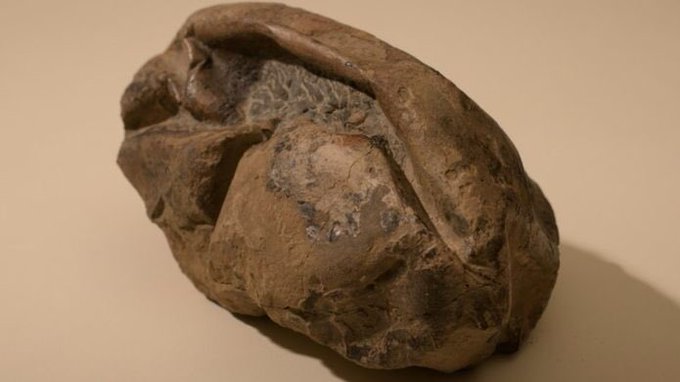Giant Egg Believed To Be from Ancient Lizard Found in Antarctica
Scientists believe a fossilized egg discovered in Antarctica could have come from a “giant marine reptile,” according to a new report in the journal Nature.
The egg, thought to be 68 million years old, was found in 2011 but languished in Chile’s National Museum of Natural History until it was examined by researchers at the University of Texas at Austin, The Independent reported.
The 11-by-7-inch egg is the second-largest of any animal ever to be found.
Some scientists are currently hypothesizing that the egg came from a mosasaur, a giant creature of the dinosaur era.
This fossilised egg was found in Antarctica in 2011 and was a mystery as it has a soft shell unlike dinosaurs. They think it was laid by a giant marine reptile, possibly a mosasaur, making it the largest reptile egg ever found!
Full story: bbc.co.uk/news/science-e…
See Naturalist Dan's other Tweets
Whether it turns out to be from a mosasaur or another animal, this is a spectacular find that, like so many fossils, totally upends what we thought anatomically/physiologically possible based on modern animals alone! Definitely puts the “cool” in Antarcticoolithus!
See Danny Barta's other Tweets
A giant fossilized egg of an extinct marine reptile found in the 68-million-year-old nearshore marine deposits in Antarctica. The identity of the animal is unknown, but these morphologies are consistent w/ the skeletal remains of mosasaurs found nearby.sci-news.com/paleontology/a…
See Jenna  's other Tweets
's other Tweets
 's other Tweets
's other TweetsI don't know why it's a problem to believe in God/be a Christian and also be a scientist. If God is God He surely knows a) more than any of us & b) all about science!
See grace van der gugten's other Tweets
“It is from an animal the size of a large dinosaur, but it is completely unlike a dinosaur egg,” Lucas Legendre, a researcher at UT Austin’s Jackson School of Geosciences, told The Independent.
“It is most similar to the eggs of lizards and snakes, but it is from a truly giant relative of these animals.”
In trying to estimate the size of the creature that laid the egg, Legendre compared the body size of 259 living reptiles to the size of their eggs.
His conclusion was that the animal that laid the Antarctic egg would have had to have been about 7 meters long, which comes out to just shy of 23 feet. Adult mosasaurs could have run as large as 60 feet, according to The New York Times.
The egg was found amid skeletons from baby mosasaurs and plesiosaurs.
“Many authors have hypothesized that this was sort of a nursery site with shallow protected water, a cove environment where the young ones would have had a quiet setting to grow up,” Legendre said.
David Rubilar-Rogers of Chile’s National Museum of Natural History, who helped discover the egg fossil in 2011, said no one was interested in studying the find until 2018, when he met Julia Clarke, a professor at UT Austin.
“I showed it to her and, after a few minutes, Julia told me it could be a deflated egg!” Rubilar-Rogers said.
“It was weird enough that they decided to collect it, even though it wasn’t clear what it was. It definitely wasn’t bone, but it was strikingly unusual,” Clarke told NPR.
Soft-shell eggs such as the fossilized one found in Antarctica are laid by various snakes, lizards and turtles.
“The shell is very thin. It can rip almost immediately upon exiting the mother, and the juvenile emerges from that egg,” Clarke explained.
“A soft-shelled fossil egg like this is a rare gem,” Princeton University biologist Mary Caswell Stoddard said. “The lack of soft-shelled fossil eggs, which are extraordinarily rare, makes it challenging to flesh out a detailed picture of egg evolution in vertebrates. This discovery helps provide one critical piece of the puzzle.”
Legendre, in his research, found several layers of membrane, indicating for certain that the fossil was an egg.
Giant Egg Believed To Be from Ancient Lizard Found in Antarctica
![Giant Egg Believed To Be from Ancient Lizard Found in Antarctica]() Reviewed by Your Destination
on
June 23, 2020
Rating:
Reviewed by Your Destination
on
June 23, 2020
Rating:









No comments